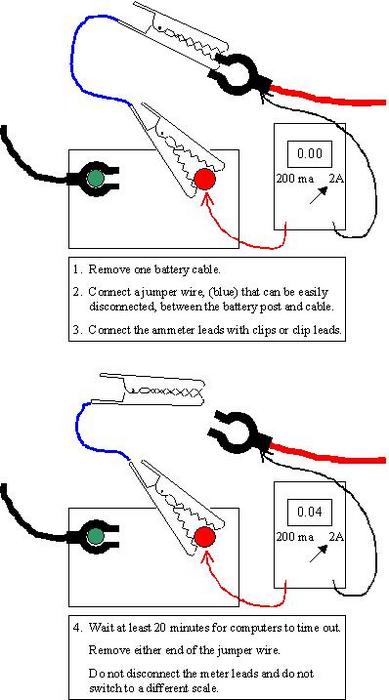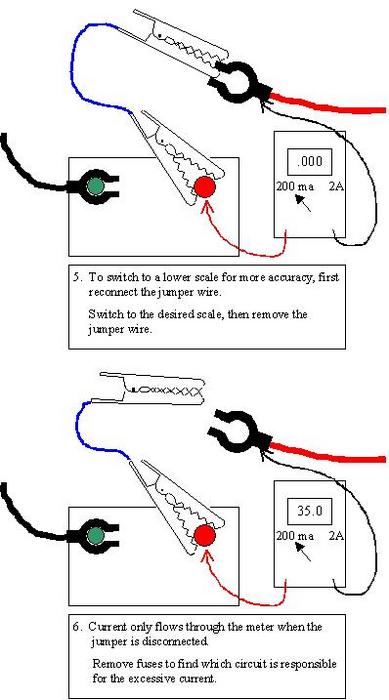Step 1: Remove either battery cable.
Step 2: Connect a jumper wire between the battery post and cable. The computers that wait to go to sleep mode will take at least 20 minutes to time out. No testing can be done until then.
Step 3: While waiting, connect the ammeter so the leads will not fall off. Later, if either lead falls off while the jumper wire is disconnected, or if you switch the meter to a different scale, the circuit will be broken which will wake up the computers for another 20 minutes. They can easily draw enough current to blow the internal meter fuse when the lead is reconnected. It is safest to disconnect the negative battery cable. If the positive cable is disconnected, as shown here, be careful to not let the cable, jumper wire, or meter lead touch any metal part or the car body. A vise grip pliers works well for holding one meter lead to the battery post. A second clip lead will do a good job of holding the second lead to the battery cable. Another solution, if you only have small clip leads, is to drill a small hole in the battery post and drive in a screw to connect the clip lead to.
Step 4: Until the computers go to sleep, the high current will flow through the easiest path which is the clip lead. That will protect the meter's internal fuse from blowing. Start with the meter on the 2 amp scale. The clip lead can be disconnected after a minimum of 20 minutes. By that time the current will have decreased to a level that can be safely measured by the meter. If the current reading is greater than 0.2 amps, begin removing fuses or disconnecting plugs until the value goes down. When it does you found the circuit that needs further diagnosis.
Step 5: When the current reading is less than 0.2 amps, you can switch to the next lower scale on the meter for more accuracy. That is most commonly the 200 milliamp scale. All ammeters use a range switch that breaks the circuit before it connects to the next contact when switching scales. Doing that will wake the computers up again. To prevent that, first reconnect the jumper wire, then you can switch the meter to the lower scale. The jumper wire can be removed again right after the range is switched.
Step 6: Unless the manufacturer specifies something different, 35 milliamps is the industry accepted maximum allowable current. If you find more than that, again remove fuses to determine the circuit with the problem.
Images (Click to make bigger)
Sunday, March 27th, 2011 AT 10:57 AM




